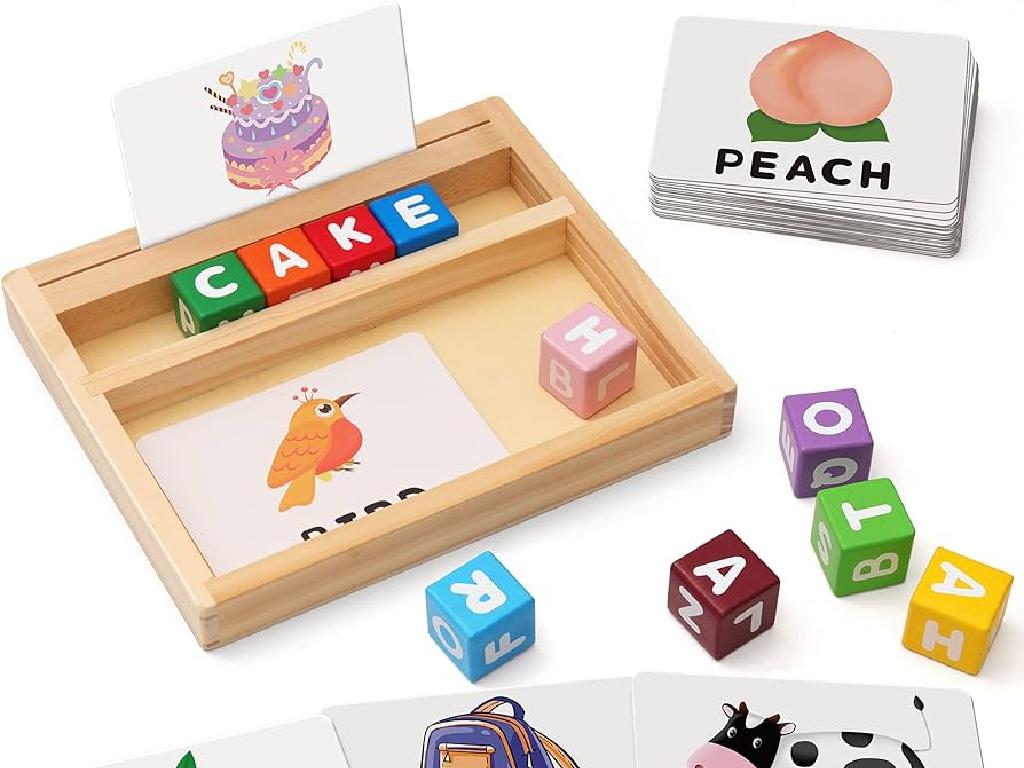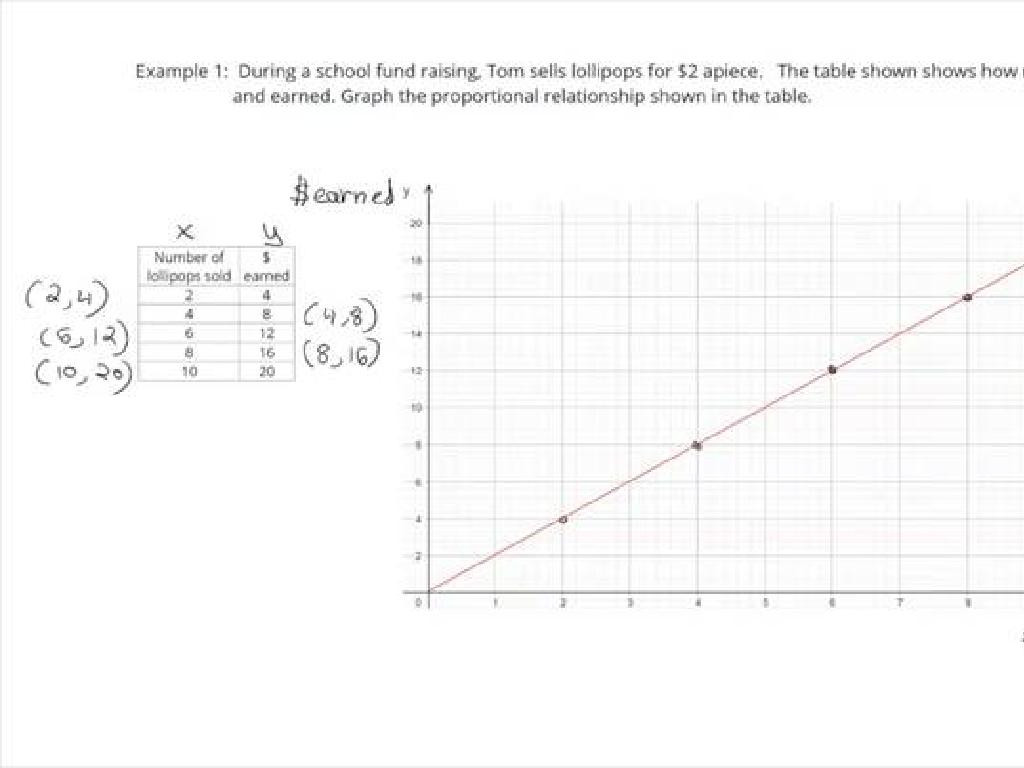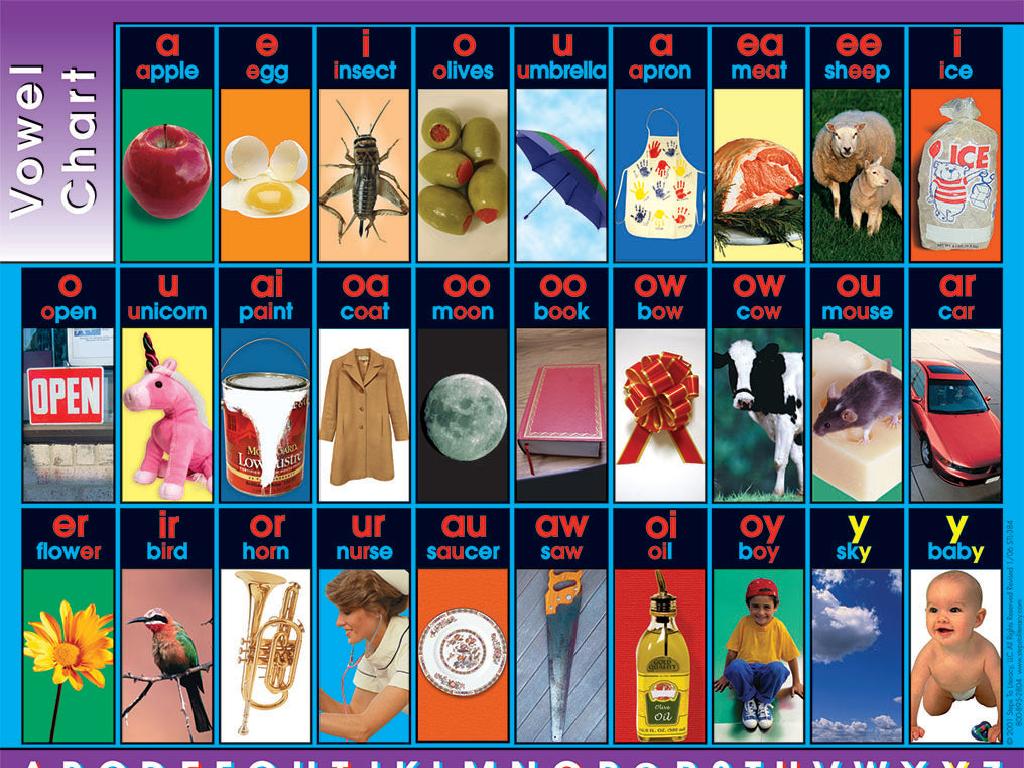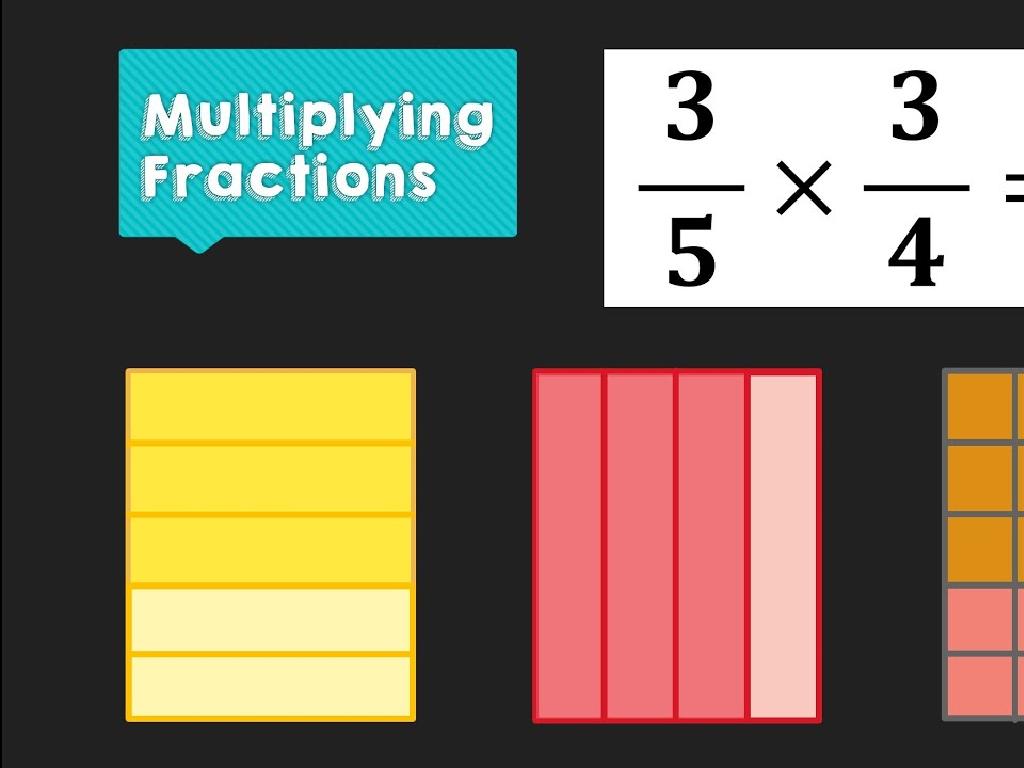Identify Plant Parts And Their Functions
Subject: Science
Grade: Fourth grade
Topic: Plants
Please LOG IN to download the presentation. Access is available to registered users only.
View More Content
Welcome to the World of Plants!
– Importance of plants in ecosystems
– Plants produce oxygen and provide food
– Today’s learning journey
– We’ll explore different plant parts and their roles
– Fun plant fact
– The tallest tree is over 379 feet tall!
– Engaging activities planned
|
This slide is designed to introduce fourth-grade students to the fundamental role of plants in our ecosystems. Emphasize how plants are crucial for producing oxygen and providing food, which supports all life on Earth. Outline the session’s objective: to learn about the various parts of a plant and understand their functions. Share a fun fact to pique students’ interest, such as the height of the tallest known tree, Hyperion, a coast redwood. The slide also hints at the engaging, hands-on activities that will follow, preparing students for an interactive learning experience. Encourage students to think about how plants affect their daily lives and the environment.
Exploring the World of Plants
– What is a plant?
– Living organisms that grow in soil, need water and sunlight.
– Various plant types
– Trees, flowers, grasses, and more.
– Plants’ role in ecosystems
– They produce oxygen, provide food, and create habitats.
– Importance of understanding plants
|
This slide introduces students to the basic concept of plants, aiming to define what a plant is and to highlight the diversity within the plant kingdom. It’s crucial to convey that plants are living organisms that require certain conditions to thrive, such as soil, water, and sunlight. Discuss the different types of plants, from towering trees to delicate flowers, and emphasize their vital role in maintaining ecological balance. They are not only producers of oxygen but also form the base of the food chain and offer habitats for numerous species. Understanding plants is fundamental to appreciating their importance to all life on Earth. Encourage students to observe plants in their surroundings and consider their contributions to the environment.
Exploring Plant Parts and Their Functions
– Main parts of a plant
– Roots, stem, leaves, flowers, fruits
– Roots absorb water and nutrients
– Like a straw, roots drink from the soil
– Leaves make food via photosynthesis
– Leaves are the kitchen, cooking with sunlight
– Flowers and fruits for reproduction
– Flowers are like invitations, fruits the gifts for seeds
|
This slide introduces the main parts of a plant and their basic functions, tailored for a fourth-grade science class. Begin with an overview of the parts: roots, stem, leaves, flowers, and fruits. Provide simple definitions, such as roots acting like straws to absorb water and nutrients from the soil, and leaves functioning as the plant’s kitchen where food is made through photosynthesis. Use an analogy to compare plant parts to the human body to make the information relatable and easier to understand. For example, roots can be compared to our hands that take in water, the stem to our neck supporting the head, leaves to our stomach where food is made, flowers to our mouths that invite others to communicate, and fruits to our hands that offer gifts, which in the case of plants, are the seeds for the next generation. Encourage students to think of their own analogies and share them in the next class.
Exploring Plant Roots
– Roots anchor plants in soil
– Roots absorb water and minerals
– Types: taproot and fibrous roots
– Taproots are thick and deep, fibrous roots are thin and spread out
– Activity: Draw and label plant roots
– Use the example of a carrot (taproot) and grass (fibrous roots)
|
This slide introduces students to the functions and types of plant roots. Begin by explaining how roots help to stabilize the plant and take in essential nutrients and water from the soil. Discuss the two main types of root systems: taproot, which is a single large root that goes deep into the soil, and fibrous roots, which spread out in a network near the surface. For the activity, provide students with drawing materials and ask them to draw and label the two types of roots on a plant. Encourage creativity and provide examples such as a carrot for a taproot and grass for fibrous roots. This activity will help solidify their understanding of root structures and functions.
Exploring Plant Stems
– Stem supports the plant
– Stem transports water & nutrients
– Woody vs. Herbaceous stems
– Woody stems are hard and rigid, herbaceous are soft and flexible
– Activity: Observing a stem
– Touch and describe the texture, firmness, and temperature
|
The stem is a crucial part of a plant, providing support to keep it upright and acting as a conduit for water and nutrients from the roots to the leaves and flowers. Differentiate between woody stems, which are hard and provide structure to trees and shrubs, and herbaceous stems, which are softer and found in plants like flowers and vegetables. For the activity, have students feel the stem of a plant, encouraging them to note its characteristics – is it hard or soft, cool or warm, rough or smooth? This tactile experience will help solidify their understanding of stem functions and differences. Prepare a variety of plant stems for the activity to give students a broader experience.
Exploring Leaves and Their Functions
– Leaves perform photosynthesis
– They convert sunlight into food for the plant
– Leaves help in transpiration
– They release excess water vapor into the air
– Leaves come in various shapes
– From broad maple leaves to slender pine needles
– Create leaf rubbing art
– Observe textures by rubbing crayon over a leaf under paper
|
This slide introduces students to the functions and diversity of leaves. Begin by explaining photosynthesis as the process by which leaves use sunlight to make food for the plant, which is crucial for their growth. Then, discuss transpiration, the process of water movement through a plant and evaporation from aerial parts like leaves. Highlight the variety of leaf shapes and sizes in different plants and how this diversity can be related to their different functions and habitats. For the activity, provide a variety of leaves and crayons. Students will place a leaf under a sheet of paper and gently rub a crayon over it to reveal the texture and shape, which helps them observe the unique patterns of veins and edges. This hands-on activity will reinforce their understanding of leaf structure and function.
Flowers and Fruits: Plant Reproduction
– Flowers’ role in reproduction
– Flowers attract pollinators for plant reproduction.
– Fruits protect and disperse seeds
– Fruits safeguard seeds and aid their spread.
– Dissect a flower in class
– Identify parts like petals, stamens, and pistils.
|
This slide introduces the functions of flowers and fruits in the life cycle of plants. Flowers play a crucial role in reproduction by attracting pollinators such as bees, which help in the transfer of pollen. Fruits develop from flowers and serve to protect the seeds within; they also play a key role in seed dispersal, which can occur through various means such as wind, water, or animals. The class activity involves dissecting a flower to identify and understand the function of its parts, including petals, stamens, and pistils. This hands-on activity will help students visualize and better grasp the concepts being taught. For the activity, provide a variety of flowers for students to examine, and guide them through the dissection process, ensuring they can identify and understand the role of each part.
Plant Functions Recap
– Review plant part functions
– Roots absorb water, stem supports, leaves photosynthesize
– Importance of each part
– Each part is vital for growth, reproduction, and health
– Quick quiz on plant parts
– Test your knowledge with a fun quiz
– Discuss plant survival strategies
– How do these parts help plants adapt and thrive?
|
This slide aims to consolidate the students’ understanding of the different parts of a plant and their respective roles. Begin by reviewing the functions: roots for absorption and anchorage, stems for support and transport, leaves for photosynthesis, flowers for reproduction. Emphasize the importance of each part in contributing to the overall survival and health of the plant. Engage the class with a quick interactive quiz to recap what they’ve learned, reinforcing their knowledge. Conclude by discussing how these parts enable plants to survive in various environments, adapt to conditions, and continue their species. This will help students appreciate the complexity and resilience of plant life.
Class Activity: Plant a Seed
– Instructions for planting a seed
– Discuss future plant parts’ functions
– Roots absorb water, stem supports plant, leaves make food
– Observe plant growth at home
– Watch your plant change and grow over time
– Record observations in a journal
– Keep a daily log of your plant’s development
|
This activity is designed to give students hands-on experience with plant growth and to understand the functions of different plant parts. Provide each student with a cup, soil, and a seed. Guide them through the process of planting the seed and covering it lightly with soil. Discuss the role of each plant part: roots for absorbing water and nutrients, stems for supporting the plant, leaves for photosynthesis, and flowers for reproduction. Encourage students to take their planted seeds home and place them in a sunny spot, watering them as needed. Ask them to observe changes and record their observations in a journal, noting growth, the appearance of new plant parts, and other changes. This will help them connect the practical activity with the theoretical knowledge they’ve gained about plant parts and their functions.
Plant Parts & Growth: Summary and Homework
– Recap of plant parts and functions
– Journal your plant’s growth at home
– Observe your plant daily and note changes
– Label emerging plant parts
– Use your knowledge to identify and label each part
– Bring your plant to the next class
|
As we conclude today’s lesson on plant parts and their functions, students should be able to identify the main parts of a plant and understand their roles. For homework, students are tasked with keeping a daily journal of their plant’s growth, making observations, and labeling the parts as they develop. This hands-on activity will reinforce their learning and prepare them for the next class, where they will share their observations. Encourage students to be detailed in their journaling and remind them to bring their plants back to class for a group discussion on the growth process and the functions of each part they’ve observed.






